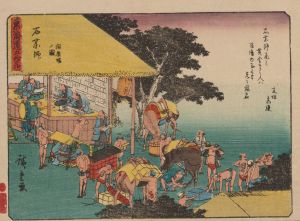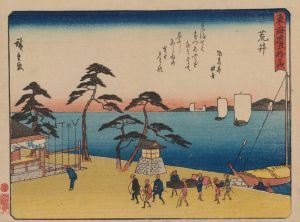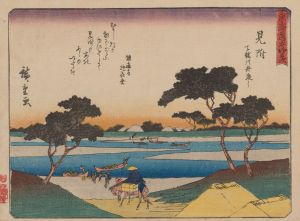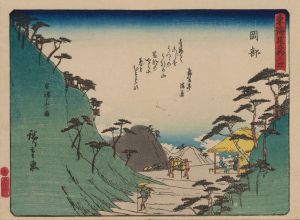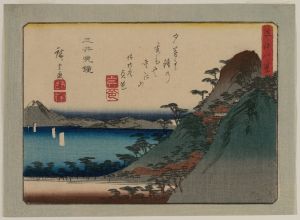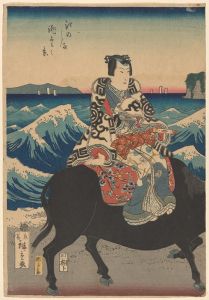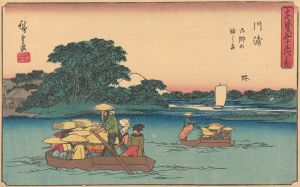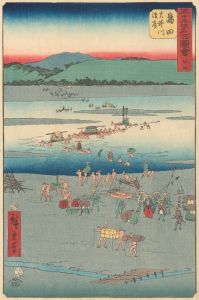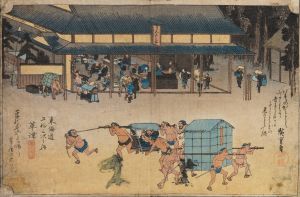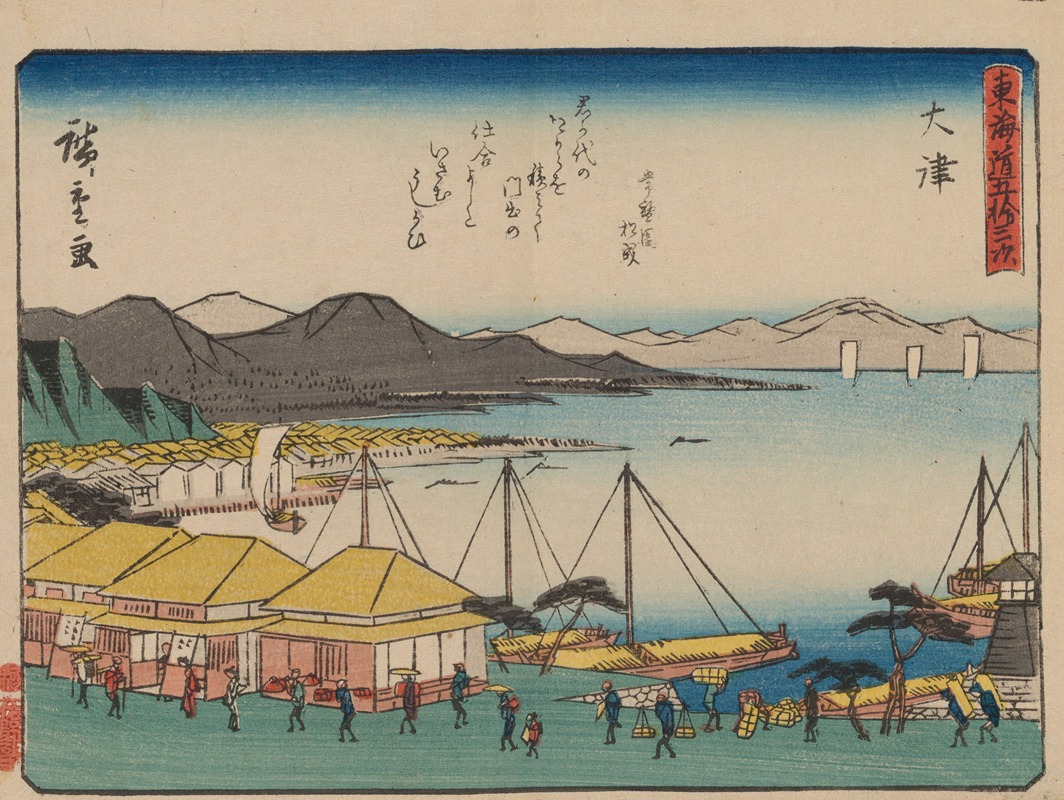
Tokaido gojusantsugi, Pl.54
A hand-painted replica of Andō Hiroshige’s masterpiece Tokaido gojusantsugi, Pl.54, meticulously crafted by professional artists to capture the true essence of the original. Each piece is created with museum-quality canvas and rare mineral pigments, carefully painted by experienced artists with delicate brushstrokes and rich, layered colors to perfectly recreate the texture of the original artwork. Unlike machine-printed reproductions, this hand-painted version brings the painting to life, infused with the artist’s emotions and skill in every stroke. Whether for personal collection or home decoration, it instantly elevates the artistic atmosphere of any space.
Andō Hiroshige, a renowned Japanese ukiyo-e artist of the Edo period, is celebrated for his landscape prints and his series "The Fifty-three Stations of the Tōkaidō" (Tōkaidō Gojūsan-tsugi). This series, created between 1833 and 1834, consists of 55 woodblock prints, each depicting one of the 53 post stations along the Tōkaidō road, as well as the starting point in Edo (modern-day Tokyo) and the endpoint in Kyoto. The Tōkaidō was the most important of the Five Routes of the Edo period, connecting the shogun's capital, Edo, with the imperial capital, Kyoto.
Plate 54 of this series, often referred to as "Tokaido gojusantsugi, Pl.54," is one of these iconic prints. This particular print captures the post station of Ōtsu, which is the last station before reaching Kyoto. Ōtsu was historically significant as a bustling town located near Lake Biwa, Japan's largest freshwater lake, and was known for its scenic beauty and strategic location.
Hiroshige's depiction of Ōtsu in Plate 54 is characteristic of his ability to blend realism with artistic expression. The print typically features travelers and local inhabitants going about their daily activities, set against a backdrop that highlights the natural beauty and cultural landmarks of the area. Hiroshige's use of color, perspective, and composition in this print exemplifies his mastery in capturing the essence of the Japanese landscape and the human interactions within it.
The "Fifty-three Stations of the Tōkaidō" series was highly influential and remains one of Hiroshige's most famous works. It played a significant role in popularizing the Tōkaidō road and its post stations, contributing to the cultural and historical understanding of travel during the Edo period. The series also reflects the growing interest in travel and tourism among the Japanese populace of the time, as well as the increasing accessibility of art through the medium of woodblock printing.
Hiroshige's work, including Plate 54, is noted for its delicate lines, vibrant colors, and the ability to evoke a sense of place and time. His prints were not only artistic achievements but also served as a form of visual documentation of the landscapes and daily life of 19th-century Japan. The series has been reprinted and reproduced numerous times, attesting to its enduring popularity and influence on both Japanese and Western art.
In summary, "Tokaido gojusantsugi, Pl.54" by Andō Hiroshige is a significant piece within the "Fifty-three Stations of the Tōkaidō" series, capturing the essence of the Ōtsu post station with artistic finesse. Hiroshige's work continues to be celebrated for its contribution to the ukiyo-e genre and its impact on the perception of Japanese landscapes and culture.






